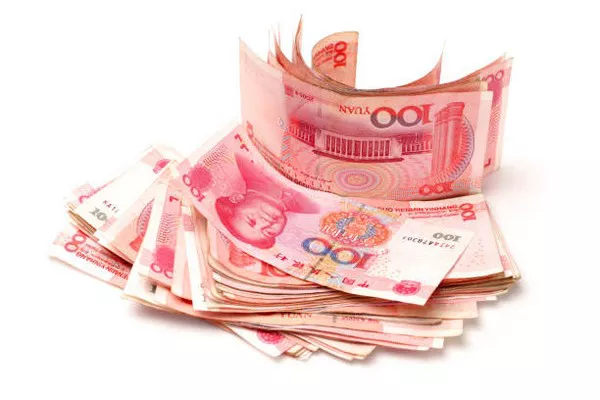In the realm of global economics, the question of whether Chinese money is backed by gold often arises. Gold has historically been a symbol of wealth and stability, and the idea of a currency backed by this precious metal holds allure for many. In the case of China, a nation with a significant influence on the global economy, understanding the relationship between its currency and gold is crucial. This article delves into the intricacies of Chinese monetary policy, examining the role of gold and dispelling common misconceptions.
The Historical Context of Gold Backing
A Brief Overview of the Gold Standard
Historically, many currencies were directly tied to gold through the gold standard. Under this system, the value of a country’s currency was directly linked to a specific amount of gold, providing stability and confidence in its value. However, the gold standard gradually declined in the 20th century, with most countries abandoning it by the 1970s due to various economic pressures and the need for flexibility in monetary policy.
China’s Historical Relationship with Gold
China has a rich history of using gold as a form of currency and a store of value. Throughout dynastic eras, gold coins were widely circulated, and the metal held significant cultural and economic importance. However, the modern Chinese monetary system operates within the framework of a fiat currency, where the value of the yuan (CNY) is not directly linked to gold.
The Current Landscape: China’s Monetary Policy
The Transition to Fiat Currency
Since the establishment of the People’s Republic of China in 1949, the country has gradually transitioned from commodity-backed currencies to a fiat currency system. The yuan, introduced in 1948, initially had a fixed exchange rate with the US dollar, but this peg was abandoned in 2005 in favor of a managed float against a basket of currencies.
Gold Reserves and Monetary Policy
While China no longer adheres to the gold standard, it does maintain significant gold reserves as part of its overall monetary strategy. The People’s Bank of China (PBOC), the country’s central bank, periodically announces updates to its gold holdings, which contribute to global market sentiment and reflect China’s economic strength and stability objectives.
Yuan Internationalization
In recent years, China has actively pursued the internationalization of the yuan, aiming to increase its global usage in trade and finance. While gold backing is not a feature of this strategy, China’s substantial gold reserves serve as a symbol of its economic power and can bolster confidence in the yuan as a reliable currency.
Debunking Myths: Is Chinese Money Backed by Gold?
Misconceptions and Reality
Despite China’s significant gold reserves, the yuan is not directly backed by gold in the traditional sense. The modern Chinese monetary system operates on the basis of fiat currency, where the value of the yuan is determined by factors such as supply and demand, economic fundamentals, and government policies—not the quantity of gold held by the central bank.
Gold as a Reserve Asset
While the yuan is not backed by gold, China’s sizable gold reserves play a different role in its monetary policy. Gold serves as a diversification strategy, allowing the central bank to hedge against currency risks and fluctuations in the value of other reserve assets, such as foreign currencies and government bonds.
Market Impact
Announcements regarding China’s gold reserves can influence global gold prices and market sentiment, but they do not directly affect the value or stability of the yuan. Investors and economists closely monitor changes in China’s gold holdings as a barometer of economic health and as a potential indicator of shifts in global monetary dynamics.
FAQs: Addressing Common Questions
1. Is China’s gold accumulation a precursor to reestablishing the gold standard?
Answer: No, China’s accumulation of gold reserves is primarily driven by diversification and risk management objectives rather than a desire to return to the gold standard. The country’s monetary policy remains focused on maintaining stability and promoting economic growth within the framework of a fiat currency system.
2. How does China’s gold reserves compare to those of other countries?
Answer: China ranks among the top holders of gold reserves globally, alongside countries like the United States, Germany, and Italy. While exact figures may vary due to periodic updates and fluctuations in holdings, China’s significant gold reserves reflect its status as a major economic power.
3. Can gold-backed currencies offer greater stability than fiat currencies?
Answer: While gold-backed currencies historically provided stability, they also limited flexibility in monetary policy and could constrain economic growth. Fiat currencies allow central banks to adjust policies in response to changing economic conditions, offering greater flexibility but requiring prudent management to maintain stability and confidence.
Conclusion
In conclusion, Chinese money, represented by the yuan, is not backed by gold in the traditional sense of a direct exchangeability for a specific quantity of the precious metal. Instead, China’s gold reserves serve as a strategic asset for diversification and risk management within the framework of a fiat currency system. Understanding the dynamics of China’s monetary policy and its relationship with gold is essential for grasping the complexities of the global economic landscape. While gold continues to hold symbolic and practical significance, the yuan’s value is determined by a broader set of factors shaped by domestic and international economic forces.


